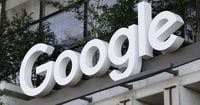In a momentous week for the technology industry, Google finds itself at the center of a courtroom drama that could reshape the digital advertising world and set precedent for other tech giants. Just months after a landmark ruling against its search monopoly, the company is now battling over the fate of its sprawling digital advertising empire in a Virginia federal court. The stakes? Nothing less than the structure of the internet’s ad marketplace, the future of news media revenue, and the delicate balance between competition and consumer privacy.
On September 22, 2025, the United States Department of Justice (DOJ) and Google squared off before U.S. District Judge Leonie Brinkema to argue over remedies for what the court earlier determined was Google’s illegal monopoly in the ad tech market. This courtroom clash follows an April 2025 ruling in which Judge Brinkema found Google liable for anticompetitive practices that favored its own ad tech business at the expense of competitors and publishers. The DOJ’s lawsuit, first filed in 2023, accused Google of abusing its dominance to disadvantage website publishers and advertisers who used competing ad tech products. As Professor Harry First of New York University colorfully put it, “It's as if on a dating site, they were looking for a date, they were trying to get a date and they were running the website that puts people together. That's Google's business,” according to CBS News.
The remedies phase, expected to last two weeks, is where the real fireworks are happening. Federal prosecutors are urging the judge to force Google’s parent company, Alphabet, to divest its largest ad exchange, AdX, and gradually unwind the technology that publishers use to sell advertising space. The DOJ’s lead attorney, Julia Tarver Wood, argued, “Nothing short of structural change would be sufficient to address Google’s monopoly power,” as reported by The Hill. The government’s proposal calls for a complete divestiture of Google’s ad exchange, AdX, and a “phased” divestiture of its publisher ad network, DoubleClick for Publishers (DFP). This includes open-sourcing the code that determines winning bids and prices in ad auctions—an unprecedented move that could fundamentally alter how online ads are bought and sold.
Google, for its part, is pushing back hard. The tech giant’s lead attorney, Karen Dunn, insisted that the government’s proposed remedies are overly broad and risk breaking technology that underpins much of the web. “[They] swing for the fences with no regard for what technology they will break and businesses they will harm,” Dunn told the court, according to The Hill. Instead, Google is offering less disruptive alternatives: opening its ad exchange to non-Google publisher networks and allowing publishers to export their data to rivals. Dunn emphasized that Google has “gone as far as it possibly can without breaking” the technology, arguing for a solution that restores competition to the state prior to its illegal practices, rather than imposing sweeping structural changes.
The economic backdrop to this legal battle is stark. Google’s ad tech business generated $30 billion in revenue in 2024, double what it was a decade ago, while Search and YouTube revenues soared to $234 billion over the same period, according to SEC filings cited by the Center for Journalism & Liberty. Meanwhile, the U.S. news media market—one of Google’s core ad tech customers—has seen print ad revenues plummet from $12 billion in 2017 to just $5 billion in 2024, with digital ad revenues stagnant at $5 billion annually. This decline has heightened concerns among publishers that Google’s dominance is squeezing their already precarious bottom lines.
The DOJ’s proposed remedies are both structural and behavioral. The centerpiece is the forced sale of AdX, the tool that gathers bid requests from advertisers and runs split-second auctions to match them with publishers. Judge Brinkema’s earlier ruling found that Google illegally tied AdX with DFP, making AdX the exclusive route for Google’s vast advertiser base (AdWords) to reach publishers. This product tying, the court concluded, allowed Google to extract “irrationally high rents” from publishers, maintaining its monopoly for over a decade.
Alongside selling AdX, the DOJ wants Google to spin off DFP in two phases. First, the ‘final auction logic’ of DFP would be open-sourced and administered by an independent organization, cutting Google out of critical decisions about which ads are displayed and at what price. If Google’s unlawful conduct persists, a full divestiture of DFP could follow, overseen by a court-appointed monitor who would review the impacts of these remedies after four years.
To ease the transition, the DOJ also proposes an escrow account funded by Google’s share of AdX and DFP revenues—potentially $15 billion this year alone—to cover publishers’ switching costs, pay for the open-source auction administrator, and handle other remedial needs. Behavioral remedies, where there is some agreement between the parties, would prohibit exclusive tying of AdX to AdWords and DFP, require interoperability with header-bidding technologies, and allow publishers to transfer their data to other platforms.
Google, however, remains adamant that such divestitures are “unworkable.” The company points to Judge Amit Mehta’s recent ruling in the separate search monopoly case, where the court rejected the DOJ’s request to spin off Chrome and allowed Google to continue making payments for default search status on Apple and other devices. Instead, Judge Mehta imposed data-sharing requirements designed to foster competition while sidestepping more disruptive remedies. Google’s attorneys argue this precedent should guide the current case, warning of “product degradation” and a “loss of consumer welfare” if the DOJ’s proposals go forward.
Notably, the remedies hearing is being closely watched by the entire tech industry. Law professor Anat Alon-Beck told CBS News, “The entire technology world is going to be paying attention.” The outcome could set the template for future cases involving other giants like Meta, Amazon, and Apple, as regulators worldwide grapple with the outsized power of digital platforms.
While the DOJ’s case is built around the need for both behavioral and structural remedies, Google maintains that restoring the status quo ante is sufficient. The company also proposes a shorter, six-year compliance supervision period, versus the DOJ’s preferred ten years, and wants any court-appointed monitor to be selected jointly by the DOJ, plaintiff states, and Google itself.
As the trial unfolds, one thing is clear: the remedies phase for the Google Ad Tech case is shaping up to be as contentious as the earlier search monopoly battle. The DOJ must convince the court that without both types of remedies, little will be achieved to restore competition or prevent future abuses—a tall order given recent judicial skepticism toward sweeping structural changes in the tech sector.
With billions of dollars, the fate of the news media, and the architecture of online advertising on the line, the world is watching to see whether the court will force Google to break up its ad tech business or opt for a lighter regulatory touch. The outcome will reverberate far beyond Silicon Valley, shaping the digital economy for years to come.





